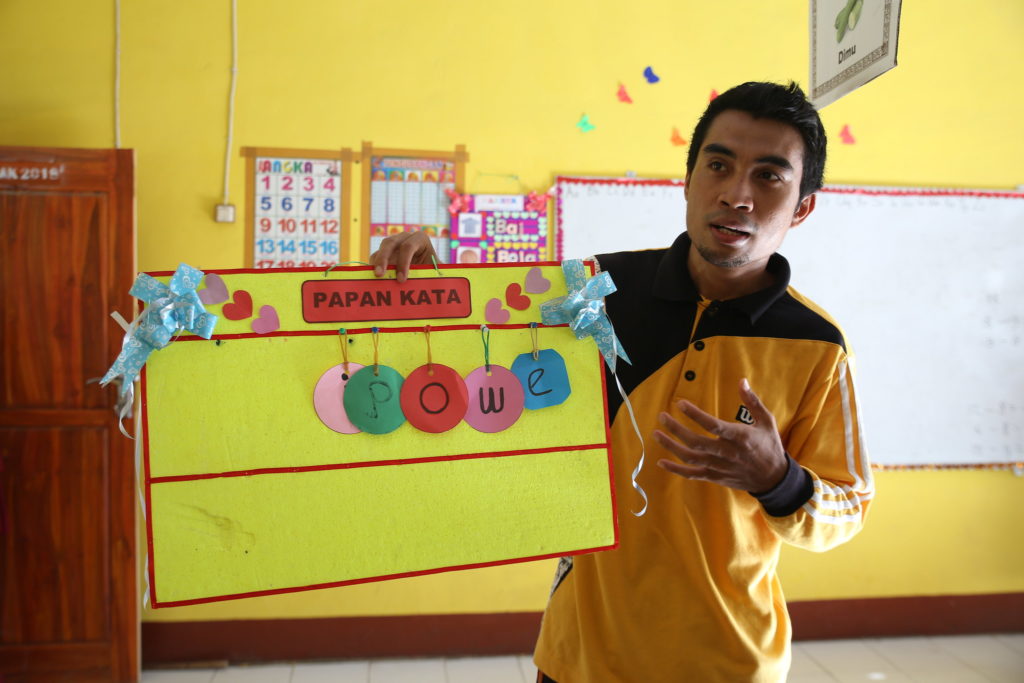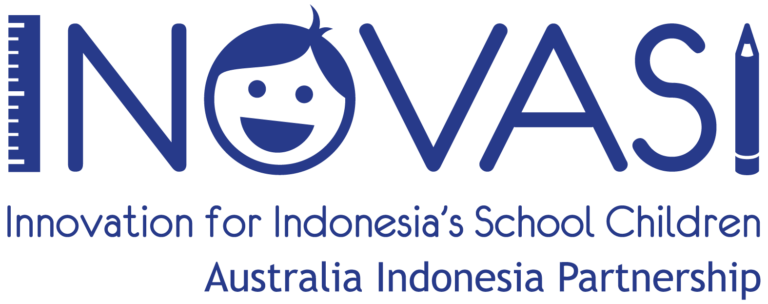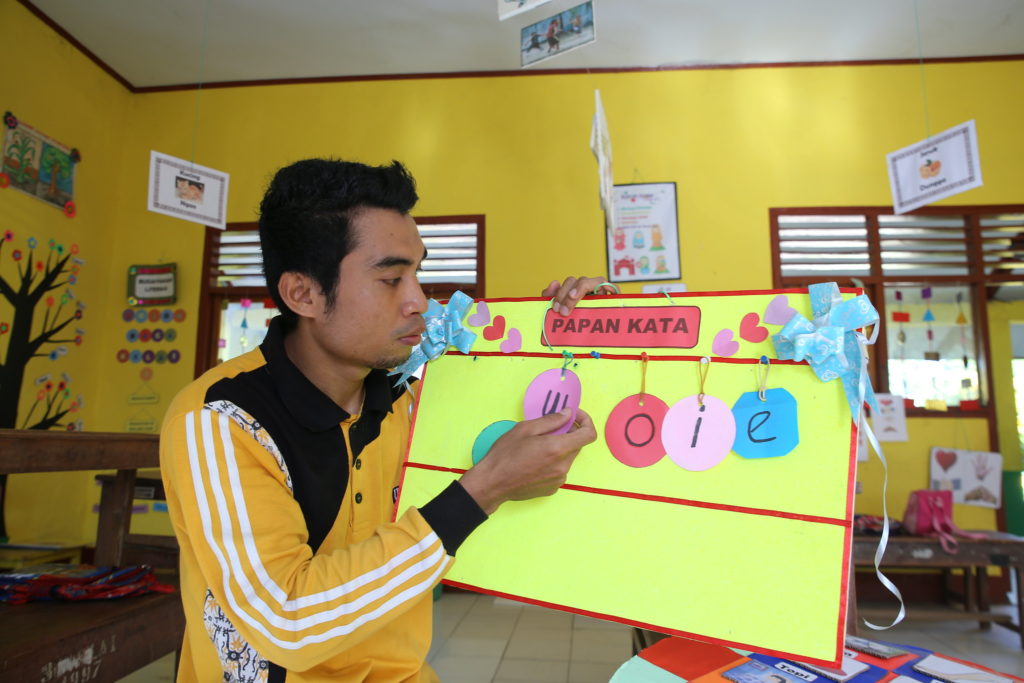
The Language Bridge method serves to address the learning needs in regions that experience language challenges. Through the INOVASI training and mentoring program, teachers in the Bima regency, NTB are continuously trained for several months until they are able to independently practice this method as they teach, especially in the early grades. They have even developed several creative learning activities based on the Language Bridge method. One such teacher is Sunardin, S.Pd., a teacher at SDN 6 Sila state elementary school in Bima regency. Sunardin has created a number of learning media to support learning activities.
Learning and playing while using a Word Board is one of Sunardin’s ways to help his students’ learning process. On the Word Board, there are a number of pictures of an object or activity. The children say the names of the objects or activities in the Mbojo language, a language that is often used by the Bima community. Afterwards, the children are asked to arrange the word of the object or activity by using the alphabet pieces that Sunardin has prepared.
After using Mbojo, Sunardin repeats the process, but in Indonesian. This way, the children are able to get to know the Indonesian names of objects or activities in the picture. Next, Sunardin asks the children to arrange the letters of the alphabet to form the name of the object or activity.
It is important to ensure that the objects or activities presented in this activity correspond to the theme of the specific lesson in order to ease the learning process.
There are three learning media that Sunardin has created, using them in order of level of difficulty. He usually starts by using the Language Dictionary, followed by the Bilingual Board, and lastly the Word Board. Sunardin notes that the Word Board is indeed more complex because students are asked to arrange the letters of the alphabet to form the word of the objects or activities in the pictures, both in the local language of Mbojo and in Indonesian.







